Awesomeness Round-Up – 10/20/2011
- By Sara Mitchell
- October 20, 2011
- 3 Comments
The full-scale model of the James Webb Space Telescope is currently at the Maryland Science Center at the Inner Harbor in Baltimore. It will be there until October 26th, 2011. It really is an impressive sight (the satellite is about the size of a tennis court!), so if you have time, be sure to check it out!
There are a number of nice photos of it. Below you can see it against the Baltimore skyline. Visible on the wall of the Maryland Science Center is Hubble spectral observations of distant galaxies projected with an intense green laser (from the laser exhibit that ended on the 18th). You can see more photos on Flickr.
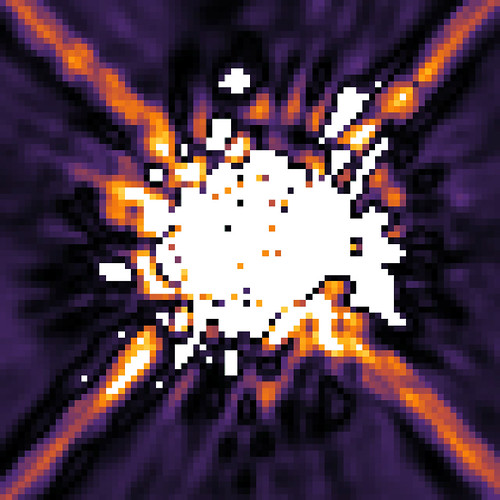
Credit: NASA, ESA, and R. Soummer (STScI)
This may look like the graphics from a 1980s-era video game, but it’s actually data from Hubble (which does much more than produce the stunning imagery we’re used to seeing). This image of the massive star HR 8799, captured in 1998 by Hubble’s Near Infrared Camera and Multi-Object Spectrometer (NICMOS), was reanalyzed recently by scientists who found something new in this pass – planets! Since the data was first collected, scientists have improved their planet-finding techniques. Having more data of the star also provided the ability to track orbits over time. Even old data is still useful, and now scientists plan to look at more archived NICMOS data to see how many more planets can be found.
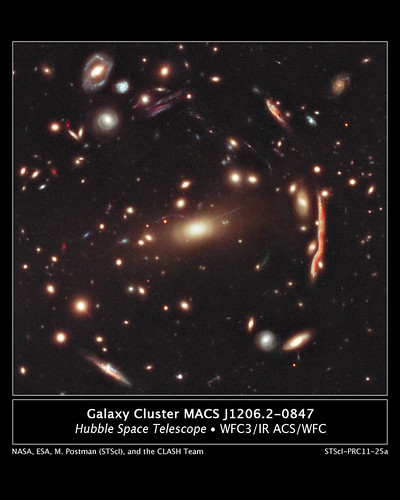
Credit: NASA, ESA, M. Postman (STScI), and the CLASH Team
More recent Hubble observations are being used to survey the presence of dark matter in galaxy clusters. Since we can’t detect dark matter directly (hence the use of “dark” in its name), we’re looking for its effects on other objects. When scientists look at Hubble observations of galaxy clusters like MACS 1206, they see some weird things – the light is being bent by the gravitational pull of the invisible dark matter, causing distorted shapes, duplicated objects, and other indicators that there’s more than meets the eye. The James Webb Space Telescope will be able to extend this survey to fainter objects, and will tell us even more about these clusters and the galaxies within them.
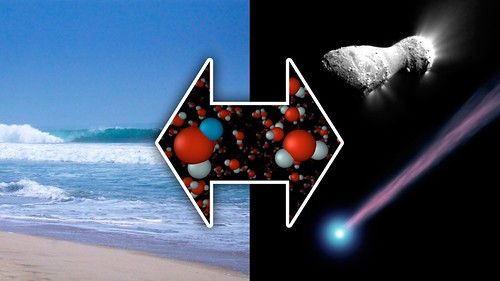
Image credit: NASA/JPL-Caltech
The Herschel Space Observatory, which studies stars and galaxies in the infrared, also turns its instruments on objects far closer to home. The satellite’s observations of comet Hartley 2, which last passed Earth a year ago, showed a surprising match between the chemical signature of the water in the comet and the signature of water in Earth’s oceans. This discovery could explain how water came to Earth, as comets from the Kuiper Belt swooped past our planet in its formative years. The key to this research is the ratio between “heavy water” (water enriched with deuterium) and normal water – Hartley’s 2 ratio matches our oceans, while comets from the more distant Oort Cloud contain much more heavy water. How did the comets get this particular ratio of water? That’s the next mystery!


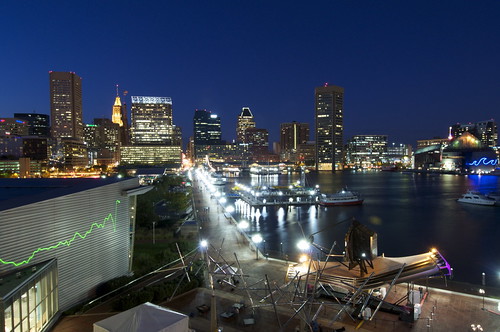
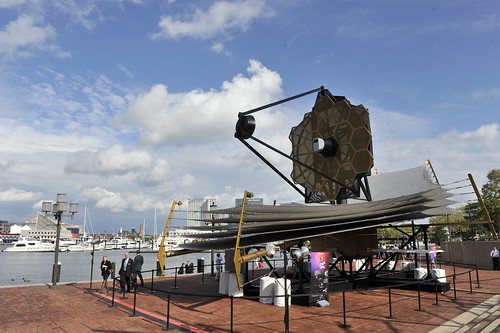


Seeing JWST up close and personal is dazzling (and dizzying when you think about that entire structure unfolding bit by bit on it’s way to L2) – I highly suggest it!
Unfortunately I will miss this. Will have to settle for some impressive photos
Dark matter is the same as Higgs boson itself.
The high velocity values of the particles cause fluctuation on bend of space-time,
this action is Dark energy itself.